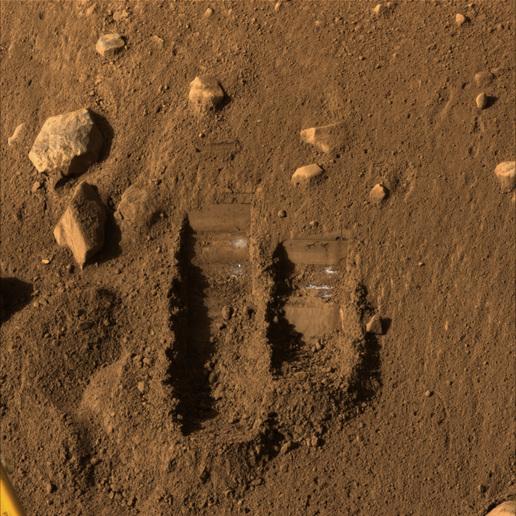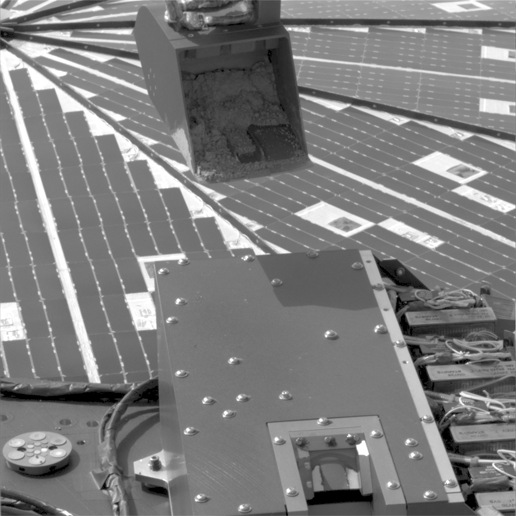It has not yet been announced what tests were done on the sample, a press conference is expected tonight at ten Israel time

NASA personnel were able to bring up a sample of the Martian soil with the shovel of the Phoenix and insert some of it into the position of the microscope.
This happened on Wednesday but pictures taken a day later confirmed the sensor readings.
As you may recall, last week NASA tried to transfer a soil sample to an oven to bake it and analyze the gases coming out of it.
It is not yet clear what type of experiment NASA conducted, but it is expected to hold a press conference at ten o'clock at night Israel time with the participation of the scientists of the operation from NASA and the University of Arizona.


5 תגובות
Why is the sample poured onto a flat surface that allows a large portion of the sample to fall and be lost, rather than into a container bounded by walls? Also what are the bright bumps on the surface that look like stud heads? Their distribution on the board looks uneven and not really symmetrical. What is?
Ami:
It is somewhat reminiscent of the serendipitous discoveries discussed here recently.
From my personal experience, I know that if I'm looking for something in a place where I don't think I put it, the chances of me finding it on the first pass are small - even if they are there. Only after I decide to ignore my memory and look as if someone else has hidden the thing am I able to find it. Our expectations greatly limit the sensory input (or the brain's analysis of that input).
Great mental strength must be mobilized to overcome this obstacle.
By the way - I still find it appropriate to use memory as a first search tool and when I'm looking for something - to look for it first in memory - to try to reconstruct what I did with it since the last time I specifically remembered what I had in my possession and to raise speculations regarding what I might have done with it. Only after all this doesn't work I muster the same mental strength and search as if I were someone else.
Are you implying that Mars is an animal?
A microscope is also good. A great deal can be discovered if it is indeed possible to control the sample and observe it from a distance as it is possible to observe it on Earth. It's a shame that the gas thing didn't work out. You can tell so many organic gasses (although in general, there is nothing like an eye mirror). Let's hope that the microscope will be able to identify creatures that look like animals. Personally, I have no doubt that they are there, but I do have a doubt as to their ease of identification.
I want to tell you a little something that happened at the Max Planck Institute for Marine Microbiology in Bremen, Germany, where I did my PhD work: for several years a German guy who I will not name worked on marine sediment samples from the coast of Namibia. He studied the sediment back and forth and used many methods and indeed information A lot accumulated. After two years, another guy came up and looked at the samples kept in the refrigerator with a microscope and was surprised to discover what was later considered the largest bacterium in the world. There were lots of small marbles there, but much larger than any bacterium, and everyone who dealt with the samples at the time did not notice that the main and largest thing in the sediment was actually An animal never known to science before.
They discovered sands on Mars